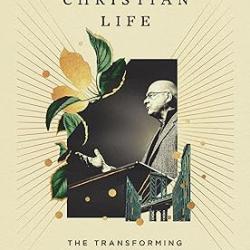This post is part of a series walking through the second volume of Abraham Kuyper’s Common Grace
Kuyper has been arguing that common grace and particular grace find their unity in the Triune God, and specifically in the person of Christ
who is mediator in a twofold sense. He is mediator of creation as the eternal Word and mediator of redemption through the incarnation. But not only do these two streams of grace flow from one and the same mountain of God’s holiness; we must also point to the fact that the waters of these two streams partially blend in the life of humanity throughout history. They do not rush forward side by side in two separate stream beds; rather, there is a variety of demonstrable connections between one stream and the other. Particular grace enriches common grace, and common grace appears again and again to be presupposed by particular grace. (743)
But how do these two streams relate to each other? There are two parts to this relationship:
- the significance of particular grace for common grace
- the significance of common grace for particular grace
For now we’re going to focus on 1., and come back to 2. later. So what is the significance of particular grace for common grace? Particular grace’s goal “lies on the other side of the grave.” (747) It is a bout God’s post-sin mercy and requires only “the birth of the elect.” Some only experience this and then immediately go to heaven–namely regenerate infants. We must remember this goal as our starting point.
This means that “the purpose of the institutional church is not to bring the elect to salvation or prepare them for heaven.” We have the narrative of conversion-sanctification-heaven, but this ignores the regenerate infants. If most conscious conversions happen after an individual is 14 (and almost never before one turns 5), then lots of people never hit this age–which statistics now show us fairly conclusively. We must not, therefore ignore regenerate infants. All together, about as many regenerate infants die as regenerate adults, given the numbers.
So we must no longer rely on conversion without for accounting for non-converted saved people. This doesn’t mean we need to change our preaching–that focuses on those over the age of 5 and still living and need not be modified. But theology must adapt to the reality that all of the saved must be accounted for. Sanctification must be theologically adjusted as well–though accounting for the perseverance of the saints along the way.
One problem with this discussion is that “conversion” is an “uncertain and slippery notion.” People backslide and then die before repenting, or just die young before they have much sanctification under their belts. Or backslide and then repent–in which case we’re left wondering which was the “real” conversion.
The Reformed know that regeneration is the ground of salvation, not the length of life. But then how should we live in the world? Sanctification and conversion are results, not means, of eternal life. We must live to the primary goal therefore of “the glorification of God’s name.” (747) Our entire lives are reoriented and we come to be focused on God and this life in a way that aligns with who we are: “everything falls into place and every objection is addressed without any compulsion.” (748)
With this in mind, both groups of the regenerate (converted and unconverted) are accounted for and those who live in this world for a time have a clear calling. Scripture is for those of us who live, not those who die young. Consequently we are all to glorify God in the time that we have.
All this to say that if the church were for salvation, it could ignore common grace. Because it exists to glorify God, we must continue as a part of the world (as opposed to the claims of the anabaptists). Common grace and particular grace meet and nudge each other along. Not so say they directly feed off each other! Instead, we confess God’s truth to the unbelieving world–and again, in preaching conversion and sanctification are the focus. But this work isn’t a sermon, so we are emphasizing both particular grace and common grace.
And here we’ve hit a major point of theological division where I’ve got to part ways a bit with Kuyper–I know of no Biblical category for those who are regenerate but unconverted. That doesn’t mean he’s wrong about the purpose of the church (it is to glorify God), but that does skew much of what he says here. As Kuyper himself pointed out in a previous chapter, the Bible is silent about the status of those who die in infancy, and here he has just hung a big chunk of his argument on something the Bible is silent about…
Dr. Coyle Neal is co-host of the City of Man Podcast an Amazon Associate (which is linked in this blog), and an Associate Professor of Political Science at Southwest Baptist University in Bolivar, MO












